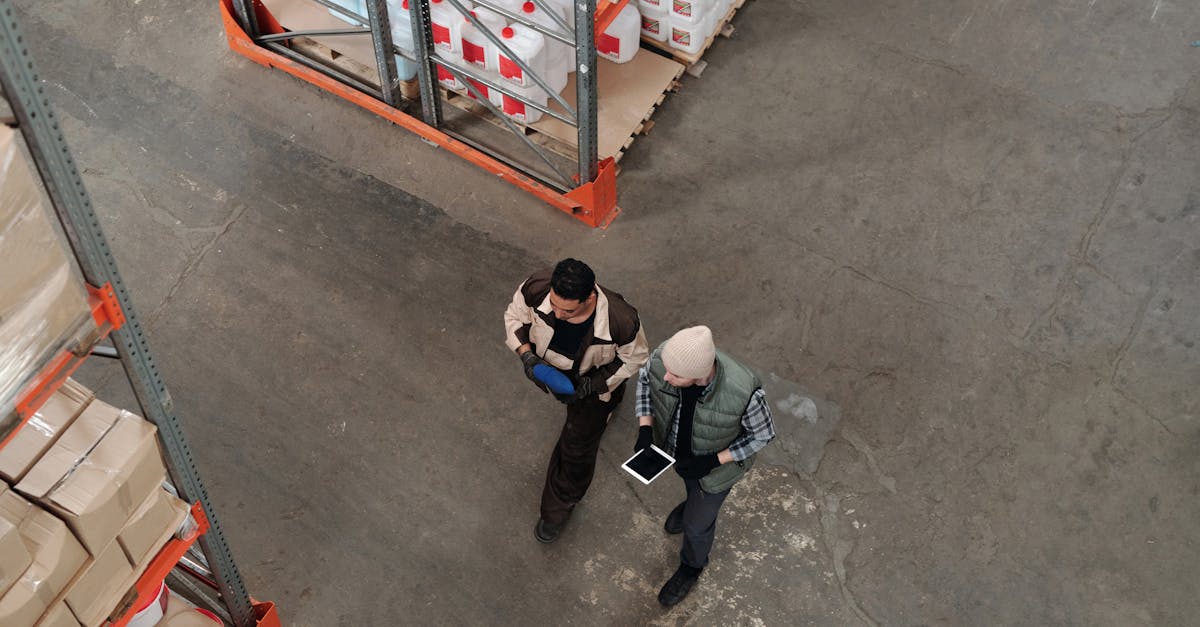7 Key Features of an Efficient Distribution Centre

Sustainable Practices in Operations
Implementing sustainable practices in operations requires an integration of eco-friendly methodologies throughout the distribution centre. This includes utilising renewable energy sources, such as solar panels, to power facilities. Energy-efficient lighting and equipment can significantly reduce overall energy consumption. Waste management strategies that promote recycling and minimisation are also essential, ensuring that the centre operates within environmentally responsible parameters.
Moreover, optimising transportation routes to decrease fuel consumption plays a critical role in sustainable operations. By using technology to streamline logistics and reduce the carbon footprint, distribution centres can contribute positively to environmental goals. Additionally, leveraging sustainable materials in packaging not only enhances the eco-friendliness of the operation but also appeals to increasingly environmentally conscious customers. These strategies ultimately lead to a more sustainable and efficient distribution network.
Benefits of EcoFriendly Initiatives
Implementing eco-friendly initiatives in distribution centres yields numerous advantages that extend beyond environmental considerations. One of the most significant benefits is cost reduction through enhanced efficiency. Sustainable practices often lead to energy savings, reduced waste, and lower resource consumption, resulting in decreased operational costs. Additionally, integrating green technologies can increase the longevity of equipment and infrastructure, further contributing to long-term savings.
The positive impact of adopting sustainable practices also resonates with consumers and stakeholders. As awareness of climate issues grows, organisations embracing eco-friendly initiatives can enhance their brand reputation and attract environmentally conscious clients. This alignment with consumer values can improve customer loyalty and open new market opportunities. Ethically driven businesses often find themselves in a stronger position to negotiate with suppliers and partners, fostering a collaborative spirit that enhances the overall supply chain reliability and effectiveness.
RealTime Data Tracking and Analytics
The integration of advanced technology in distribution centres has made real-time data tracking and analytics indispensable. Through sophisticated software and IoT devices, operators can monitor inventory levels, track shipments, and assess workflow efficiency as events unfold. This immediate access to information enables organisations to respond promptly to fluctuations in demand and to avoid stockouts or overstock situations.
Leveraging data analytics allows companies to gain deeper insights into their operational performance. By analysing trends and patterns, managers can make informed decisions that optimise resources and improve service delivery. This level of responsiveness not only enhances customer satisfaction but also positions the distribution centre as a more agile component within the broader supply chain network.
Making Informed Decisions with Data
Real-time data tracking provides an invaluable resource for distribution centres. With constant access to information regarding inventory levels, order statuses, and transportation logistics, managers can react promptly to any issues that may arise. This immediacy helps minimise delays and optimises operations, ensuring that resources are allocated efficiently to meet demand.
Moreover, leveraging analytics allows centres to identify trends and patterns over time. By assessing historical data, decision-makers can forecast inventory needs more accurately and plan better strategies for cost reduction. Making decisions based on data rather than intuition empowers managers to implement practices that enhance overall productivity and drive continuous improvement within their operations.
Strong Supplier and Partner Relationships
Building and maintaining strong relationships with suppliers and partners is essential for the smooth operation of a distribution centre. Long-term partnerships foster trust and reliability, which are crucial in ensuring that goods arrive on time and meet quality standards. Regular communication promotes transparency, allowing for better coordination during peak seasons or unexpected disruptions. Establishing clear expectations and mutual goals helps create a collaborative environment where both parties can thrive.
A well-established network of suppliers can also lead to competitive advantages such as improved pricing and exclusive access to new products. Close relationships enable distribution centres to engage in shared initiatives, such as joint marketing efforts or co-innovation, which can enhance operational efficiency. By working together, stakeholders can streamline processes, reduce lead times, and effectively respond to market changes, ultimately delivering greater value to customers.
Collaborating for Efficient Supply Chains
Building strong relationships with suppliers and partners is fundamental for optimising supply chain efficiency. By fostering open communication and trust, distribution centres can streamline processes and enhance coordination. This collaboration allows for better sharing of information regarding inventory levels, production schedules, and transportation capabilities. Partners can respond swiftly to changes in demand, ensuring that products reach customers promptly and without disruptions.
Effective collaboration also facilitates innovative solutions to common challenges in distribution. Joint problem-solving efforts can lead to improved logistics strategies, cost-sharing initiatives, and enhanced service offerings. When partners work closely together, they can identify opportunities for reducing lead times and minimising waste. This not only benefits individual organisations but contributes to a more resilient and responsive supply chain overall.
FAQS
What are the main features of an efficient distribution centre?
The main features include sustainable practices in operations, real-time data tracking and analytics, and strong supplier and partner relationships to enhance operational efficiency.
How do sustainable practices benefit distribution centres?
Sustainable practices help reduce waste, lower operational costs, improve brand reputation, and ensure compliance with environmental regulations, ultimately contributing to a more efficient operation.
Why is real-time data tracking important for distribution centres?
Real-time data tracking allows for immediate insights into inventory levels, order statuses, and operational efficiencies, enabling informed decision-making and faster response times.
How can strong supplier and partner relationships improve distribution efficiency?
Strong relationships facilitate better communication, foster collaboration, and enable smoother logistics operations, which can lead to reduced delays and increased overall efficiency in the supply chain.
What role does data analytics play in decision-making for distribution centres?
Data analytics provides actionable insights that help managers identify trends, forecast demand, optimise inventory levels, and make data-driven decisions, ultimately enhancing performance and efficiency.
Related Links
Review of the Latest Distribution Centre Design SoftwareA Historical Overview of Distribution Centre Design Trends
Roundup of Top Distribution Centre Design Innovations
Why You Should Consider Automated Solutions in Your Distribution Centre
What to Include in Your Distribution Centre Design Checklist
Why Effective Distribution Centre Design is Crucial for Business Success
What to Consider When Designing a Distribution Centre